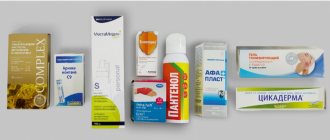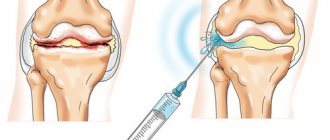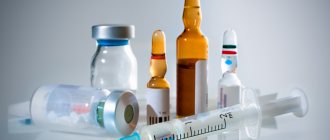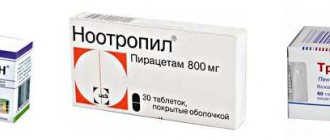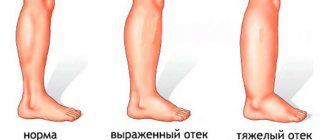09/15/2021 Non-steroidal anti-inflammatory drugs (NSAIDs or NSAIDs) are widely used against inflammatory processes in the body. Medicines are sold in tablet form, capsules, and dosage forms for external use. They not only have an anti-inflammatory effect, but also reduce temperature and also relieve pain.
The drugs have contraindications and side effects, so the doctor must select them, taking into account the individual characteristics and condition of the patient.
Action of NSAIDs
The therapeutic properties of the drugs are achieved by reducing the production of prostaglandin and blocking COX-2 (cyclooxygenase enzyme). These remedies fight the symptoms of the disease, but do not affect its causes. Therefore, additional therapy is needed that eliminates the root cause of the pathology.
NSAIDs are often used for pain relief for:
- inflammatory diseases,
- rheumatism,
- degenerative changes in organs and tissues.
They are also used for migraines and other non-rheumatic diseases and injuries.
Popular anti-inflammatory drugs
Ibuprofen
The drug fights all types of pain, including inflammation of the joints, and relieves fever. Often used for pain due to cramps that occur during menstruation.
Available in tablet form.
| Ibuprofen Welfarm tab 0.4 x 30 |
| Ibuprofen tab 0.2 x 50 |
| Ibuprofen tablet p/p 400 mg x 10 |
| Ibuprofen tab 0.2 x 20 |
Diclofenac
Prescribed for the treatment of rheumatic diseases. Reduces swelling and stiffness of joints in the morning. Increases motor range in case of joint diseases. A stable effect is achieved after 1-2 weeks of treatment.
| Diclofenac amp 25mg/3ml x 5 (Grotex) |
| Diclofenac amp 25mg/3ml x 10 |
| Diclofenac amp 25mg/3ml x 5 |
Dolgit
Product for external use. Thanks to the phenylpropionic acid derivative in its composition, it relieves pain and inflammation. Effectively combats joint stiffness in the morning and provides increased mobility in the joints.
The dosage form is cream in tubes.
| Dolgit gel 5% 100 mg |
Voltaren Emulgel
Topical preparation. Intended for adults and children over fourteen years of age.
Diclofenac in the composition helps relieve discomfort and relieves inflammation. The gel-like emulsion is quickly absorbed into the skin, which provides almost instantaneous action.
Relieves swelling of injured joints, muscles, tendons, soft tissues. Relieves pain from tendinitis, bursitis and rheumatism.
Available in gel form in tubes.
| Voltaren Emulgel 1% 100 mg |
Nurofen Express Forte
The drug is in capsule form. Designed to relieve pain of various origins. A popular remedy for menstrual and neuralgic pain. For colds and flu, it relieves discomfort in muscles and joints. The medicine can be taken by adults and children from the age of twelve. It is not allowed to take more than three tablets per day.
| Nurofen Express Forte 400 mg No. 20 |
Meloxicam
The medicine blocks the body's production of substances that cause inflammation and pain. Has antipyretic properties. Reduces sensitivity, relieves discomfort, stiffness and inflammation in osteoarthritis and rheumatoid arthritis. Normalizes the condition of juvenile rheumatoid arthritis that occurs in childhood.
| Meloxicam tab 7.5 mg x 20 |
| Meloxicam-Prana tab 15mg No. 20 |
| Meloxicam-Prana tab 7.5 mg No. 20 |
Amelotex
The drug is based on Meloxicam. Increases the motor volume of joints. In a short time it fights inflammation and discomfort thanks to its chondroprotective properties.
The course of treatment is three to four weeks. Amelotex should be applied twice a day.
The dosage form is gel.
| Amelotex gel 1% 30g |
Nise
Product based on Nimesulide. The active substance, in addition to relieving pain, removes swelling. Has antioxidant properties.
The drug relieves symptoms of osteoarthritis, rheumatism, neuralgia, fever, bursitis, tendonitis, ankylosing spondylitis.
| Nise gel 1% 100g |
Dolobene gel
The active ingredient is ibuprofen, a component that relieves inflammation and pain. The duration of treatment is determined by the doctor. Usually for injuries, including sports, it is two weeks, for rheumatic diseases - three weeks.
It is used to relieve inflammation and swelling of soft tissues, treat bruises, deformations, and sprains.
Release form: gel in tubes.
| Dolobene gel 90g |
Nimesil
Often used after surgery. Effective for diseases of the musculoskeletal system (arthritis, arthrosis, etc.) during periods of deterioration of health. Fights fever caused by infectious diseases or other reasons. The drug is good for improving the condition of soft tissues and joints. It is used for therapy in urology, gynecology, disorders of the vascular system, and degenerative changes in the body.
Available in the form of granules for preparing a suspension.
| Nimesil granules for suspensions 100 mg No. 30 |
Nimesulide
Clinical studies have shown that Nimesulide is able to relieve pain in a relatively short time - about twenty minutes. This allows the drug to be used to combat acute conditions.
Indications for use are arthritis, tendinitis, pathologies in the field of gynecology, infectious diseases, inflammatory processes after surgery.
| Nimesulide Welfarm tab 100 mg x 20 |
| Nimesulide-lect tab 100mg No. 40 |
| Nimesulide gran d/susp pack 100 mg x 30 |
Ketonal Duo
Relieves pain, inflammation, fever. Thanks to the prolonged action, relief is felt longer.
After consumption, the drug is absorbed directly from the gastrointestinal tract into the blood, where it is maximally concentrated after about a couple of hours.
Release form: capsules with gradual release of the active substance.
| Ketonal Duo capsules 150g No. 30 |
Ketoprofen
Topical application in gel form.
It is used in the presence of morning stiffness of the joints, weakens the course of arthralgia. Effectively helps relieve muscle pain and combat post-traumatic lesions. Before using the drug, it is worth considering other treatment methods. If treatment with Keptrofen is necessary, it is recommended to use the smallest dosage and the shortest time of use, based on the expected results of therapy.
| Ketoprofen gel 2.5% 40g |
Movalis
Contains meloxicam, a derivative of enolic acid. Intended for the initial stage of therapy and short-term symptomatic treatment. It is not combined with other drugs from the list of non-steroidal anti-inflammatory drugs and cannot be used together with them.
Available in the form of a solution for intramuscular injection.
| Movalis solution 15 mg No. 3 |
Revmart
Indications for use are inflammation of the joints and their degenerative changes, which are accompanied by pain: acute osteoarthritis, ankylosing spondylitis, chronic polyarthritis, rheumatoid arthritis, radiculitis and osteoarthritis.
The release form of the medicine is tablets.
| Revmart tab 15mg x 10 |
| Revmart tab 15mg x 20 |
| Revmart tab 7.5 mg x 20 |
Paracetamol
Analgesic non-narcotic drug used for mild or moderate pain: headache (including migraine), dental. Also used for sore throat, myalgia and neuralgia.
The drug reduces temperature for colds and various infectious diseases.
The drug relieves symptoms for the duration of its action, but does not affect the development of the disease.
| Paracetamol tab 0.5 x 20 |
Weldexal
Tablets and solutions are prescribed for acute and chronic forms of inflammatory diseases, metabolic and inflammatory-degenerative pathologies of the musculoskeletal system. Relieves pain of various origins: after surgery, dental pain, with metastases in bone tissue, during menstruation, radiculitis, renal colic, sciatica, neuralgia.
This is a symptomatic remedy that does not affect the progression of the disease.
| Weldexal tablet. p/p/o 25 mg No. 10 |
| Veldexal solution for IV and IM 25 mg/ml 2 ml x 5 |
Ketoprovel
Symptomatic medicine in tablet form. Relieves inflammation and pain in radiculitis, rheumatoid and seronegative arthritis, osteoarthritis, bursitis, cancer, neuralgia, tendonitis, algodismenorrhea, myalgia. Helps with toothache and headaches, as well as pain symptoms after injuries and operations.
| Ketoprovel tab 100 mg x 20 |
Ketorolac
Anti-inflammatory, analgesic drug with antipyretic effect.
Used for severe or moderate pain after injuries, operations, oncology, arthralgia, radiculitis, dental diseases, neuralgia.
Prescribed for symptomatic therapy.
| Ketorolac tab 10 mg x 20 |
| Ketorolac amp 30mg 1ml No. 10 |
Aponil
Used against inflammation, pain, elevated body temperature. Selectively inhibits COX-2, acting directly on the site of inflammation. Fights pain, fever and inflammation of the musculoskeletal system.
| Aponil tab 100 mg x 20 |
Aceclofenac
The symptomatic drug is used as part of complex therapy for inflammatory diseases of the musculoskeletal system, to relieve pain in glenohumeral periarthritis, rheumatism, and dental diseases. The product reduces joint swelling and eliminates morning stiffness.
| Aceclofenac Welfarm tab p/p/o 100 mg x 20 |
Acetylsalicylic acid
The product fights pain, fever, inflammation. Blocks the production of thromboxane A2, inhibiting platelet aggregation. Helps with mild to moderate pain.
Prescribed for adults and children over 15 years of age.
| Acetylsalicylic acid 500 mg x 20 |
| Acetylsalicylic acid 500 mg x 20 R |
Diclogen
The drug is used for short-term treatment of moderate pain in diseases of the musculoskeletal system, after operations and injuries, in diseases of the pelvic organs, as well as neuralgia and algodismenorrhea.
| Diclogen amp 25mg/3ml x 5 |
NSAIDs – what has changed over the past 10 years?
It is known that non-selective cyclooxygenase (COX) inhibitors, i.e. all classical NSAIDs, can increase blood pressure due to their effect on renal prostaglandins (PGs) and reduce the effectiveness of most antihypertensive drugs: β-blockers, angiotensin-converting enzyme inhibitors, diuretics (with the exception of Ca blockers). -channels). COX-2 inhibitors do not affect blood pressure and the effectiveness of drugs to lower blood pressure. Table 1 shows the classification of NSAIDs according to their selectivity for COX [5]. All representatives of the NSAID group are characterized by side effects that are a consequence of the blockade of the COX enzyme. The analgesic and anti-inflammatory effect of NSAIDs is associated with the suppression of the function of the “inducible” form of this enzyme COX-2, which is responsible for the hyperproduction of PGs, the most important mediators of pain and inflammation in the area of the pathological process. Selective COX-2 inhibitors (nimesulide, meloxicam) are inferior in the manifestation of direct effects to non-selective NSAIDs, but in their adverse reactions they are less aggressive in relation to the gastrointestinal tract. A significant risk of developing complications from the cardiovascular system (CVS) occurs in individuals taking highly selective COX-2 inhibitors (coxibs - celecoxib, etoricoxib) [6]. A serious problem, which is the subject of a pan-European discussion, remains the assessment of the real risk of developing adverse reactions with long-term use of NSAIDs, as a result of which their therapeutic value may be significantly limited [1]. Traditionally, the first place among these complications is given to NSAID gastropathy, a specific pathology of the upper gastrointestinal tract, characterized by the appearance of erosions of the mucous membrane, ulcers and gastrointestinal disasters: bleeding and perforation [7]. “NSAID-induced gastropathy” is a term used to describe lesions (erosions and ulcers) of the upper gastrointestinal tract as the most common unwanted side effect of NSAIDs [8]. This gastropathy has characteristics that distinguish it from standard peptic lesions: it is observed mainly in the antrum and prepyloric region, most often affects the elderly, in particular women, and is characterized by an asymptomatic course, representing a great danger [9]. According to data from the 1990s, patients who regularly received NSAIDs died from gastrointestinal bleeding 2–3 times more often than people who did not take any drugs of this drug group [7]. It is estimated that GI lesions occur in up to 25% of patients, causing ulcers in 40% of them and increasing the risk of bleeding, hospitalization, and death [10].
In order to avoid or minimize the negative impact of NSAIDs on the gastroduodenal mucosa, 2 approaches are used: 1) the NSAIDs themselves are improved in order to make them safer; 2) combine NSAIDs with antisecretory agents (proton pump inhibitors (PPIs)) or synthetic analogues of PG (Table 2) [11]. According to the recommendations of the American Rheumatological Association (2002), if there is a high risk of damage to the mucous membrane of the gastroduodenal zone while taking NSAIDs (2 or more risk factors, complications in history), it is necessary to prescribe selective COX-2 inhibitors in combination with PPIs instead of classical (non-selective) NSAIDs , if there is 1 risk factor, you can limit yourself to only a selective COX-2 inhibitor, and if the risk is low (there are no risk factors), you can use classic NSAIDs [8]. In recent years, fundamental importance in assessing the safety of NSAIDs has been given to the risk of developing dangerous complications from the cardiovascular system: myocardial infarction, sudden coronary death and ischemic stroke (cardiovascular accidents). The vast majority of episodes of serious gastrointestinal complications that occur while taking NSAIDs are observed in patients with so-called risk factors, the most important of which are: advanced age (over 65 years), a history of ulcers, especially complicated ulcers, taking high doses of NSAIDs or concomitant use NSAIDs and angioplatelet agents and/or anticoagulants, severe concomitant diseases, etc. In this case, the assessment of risk factors is carried out taking into account their gradation for each patient individually (Table 3, 4).
A large-scale study was conducted to assess the incidence of gastrointestinal complications with the use of NSAIDs for the period 2001–2008. in the Friuli – Venezia – Giulia area (Italy) [13]. Purpose of the study: information on the risk of developing complications from the upper gastrointestinal tract in patients taking nimesulide, the most common NSAID in Italy. As part of the monitoring of the drug nimesulide by European regulatory authorities, the risk associated with the use of nimesulide and other NSAIDs was assessed in comparison with the risk in patients not taking these drugs. The study included 588,827 patients with a total of 3,623,341 NSAID prescriptions, and nimesulide was found to be the most popular drug. The incidence rate of upper gastrointestinal lesions decreased by 50% from 2001 to 2008: 4.45 cases per 1 thousand patient-years in 2001 versus 2.21 cases per 1 thousand patient-years in 2008. B the study presented data on the relative risk (RR) of developing lesions when using NSAIDs, which averaged 3.28; for drugs such as rofecoxib, celecoxib, nimesulide RR <2; for the drugs ibuprofen, diclofenac, etoricoxib and meloxicam – 5>OR>2; for the drugs ketoprofen, piroxicam – RR≥5. The incidence rates of upper gastrointestinal lesions in the Friuli-Venezia-Giulia region decreased by approximately 50% between 2001 and 2008. Thus, it was concluded that nimesulide has a low or medium range of RR values.
Unlike most NSAIDs, nimesulide selectively inhibits the “pro-inflammatory” isoform of COX-2 and has a lesser effect on the “physiological” COX-1 [7]. It is the first selective COX-2 inhibitor synthesized (Table 1) [14]. Simultaneous inhibition of COX-1 and COX-2, characteristic of other NSAIDs, significantly narrows the range of their use due to possible side effects from the gastrointestinal tract. Another advantage when prescribing nimesulide is its non-acidic origin (in the nimesulide molecule the carboxyl group is replaced by sulfonanilide), which provides an additional protective effect on the gastrointestinal mucosa. The main advantage of oral administration of nimesulide is its better tolerability compared to other NSAIDs [5]. In particular, when using nimesulide, side effects associated with the gastrointestinal tract developed much less frequently, which is most likely due to its selectivity to COX-2. Nimesulide has anti-inflammatory, analgesic, antipyretic effects. A significant safety factor for nimesulide is the presence of antibradykinin and antihistamine effects, which are as important in the postoperative period as the anti-inflammatory effect [15]. Table 5 presents data on the frequency of damage to the gastrointestinal mucosa identified in patients at the Institute of Rheumatology of the Russian Academy of Medical Sciences for the period 2000–2005. [16].
A characteristic feature of nimesulide is the low risk of developing gastropathy compared to traditional NSAIDs [17]. A.E. Karateev et al. [5] conducted a retrospective analysis of the frequency of erosive and ulcerative complications of the gastrointestinal tract when taking diclofenac and COX-2 selective NSAIDs in patients with rheumatic diseases who received inpatient treatment at the Institute of Rheumatology of the Russian Academy of Medical Sciences in the period from January 2002 to November 2004. A less frequent occurrence of multiple erosions and ulcers when taking COX-2 selective NSAIDs, especially if there is a history of ulcers. Most rarely, gastrointestinal lesions developed when taking nimesulide [18].
So, nimesulide, a selective NSAID with a good safety profile, has become the leader among prescribed NSAIDs in Russia over the past 10 years. Numerous domestic and foreign studies have shown that when using nimesulide, there is a low risk of developing side effects from both the gastrointestinal tract and the cardiovascular system. Today, the search for “safe” NSAIDs remains relevant. The annual cost of treating GI lesions is approximately $134 for patients not treated with NSAIDs, $180 for occasional NSAID users, and $244 for chronic NSAID users (as of 1996); Excessive costs to the health care system caused by the adverse effects of NSAIDs reached almost $500 million (as of 1998) [10]. The findings suggest that when determining the true cost of NSAIDs, costs associated with the treatment of gastric and duodenal lesions should also be taken into account [10].
In order to increase the safety of NSAIDs, molecules of active substances containing an NO group were created. An attempt to reduce the number of side effects of NSAIDs on the gastrointestinal tract and cardiovascular system was to bind NSAIDs to a donor of nitric oxide (NO), which inhibits COX. NO ensures the preservation of the gastric mucosa and maintains cardiovascular homeostasis [19]. Interest in NO in connection with the prescription of NSAIDs is due to the physiological properties of this small molecule, which has a wide range of diverse effects on organs and tissues [8]. The effects of NO are associated with the processes of slowing platelet aggregation and migration of neutrophils through the vascular wall, relaxation of smooth muscle cells of the vascular intima, neoangiogenesis, neoneurogenesis, etc. In the field of inflammation and tissue damage, NO can act in a “negative” role as a pain mediator, causing sensitization and direct stimulation of nociceptors [20]. For the gastric mucosa, NO acts as a fundamental protective factor, which “duplicates” the protective properties of PG and has a unidirectional effect with them. NO stimulates mucus secretion, regulates microcirculation, and inhibits the adhesion of leukocytes to the endothelium. NO is an essential component of the endogenous system of the mucous membrane of the stomach, duodenum and small intestine, protecting against damage, maintaining the integrity of the structure and function of the gastrointestinal tract by increasing mucus production, bicarbonate secretion, blood flow and reducing pro-inflammatory activation of cellular composition. The stimulating effect of NO on mucus secretion is an important process that ensures restoration of the gastric mucosa when damage to its surface develops [21].
The use of the protective properties of NO to improve the safety of NSAIDs served as the basis for the creation of the drug amtolmetin guacil (AMG), which has gastroprotective properties, based on the non-selective NSAID tolmetin. AMG is a product of combinatorial chemical technology that combines tolmetin with the amino acid glycine and guaiacol, which, by inhibiting COX-1 and COX-2, disrupts the metabolism of arachidonic acid and reduces the formation of PG (including at the site of inflammation) [22]. Due to the mechanisms of COX inhibition, AMH has anti-inflammatory, analgesic, antipyretic, and desensitizing effects [23]. The protective effect of AMH on the gastric mucosa is realized by stimulating capsaicin receptors (vanilloid receptors) present in the walls of the gastrointestinal tract. AMH contains a vanillin group [24], due to which it stimulates capsaicin receptors, indirectly causing the release of gastrointestinal peptides, including calcitonin gene-encoded peptide (CGRP), which leads to an increase in NO synthesis [25]. The pharmacological advantages of the drug AMG (drug Nizilat®), unlike other NSAIDs, are determined by an increase in the activity of NO in the gastrointestinal mucosa. The structure of AMH itself contains a protective effect for the gastroduodenal mucosa, which compensates for the weakening of protection by reducing the level of endogenous PGs when inhibiting COX [8].
The results of the analysis indicate that AMH is characterized, along with a better tolerability profile compared to other NSAIDs, and the potential for cost savings. The first analysis showed that, regardless of the severity of the lesions and the comparator drug considered, the use of AMH allows the use of fewer healthcare resources, which leads to cost savings [10]. The registered advantage of AMG over other NSAIDs is also explained by the fact that the use of AMG helps prevent the occurrence of severe lesions (grade 4), as a result of which patients require hospital treatment. A meta-analysis of early (before 1999) results of randomized controlled clinical trials that reported gastric tolerability of AMH compared with other NSAIDs in the treatment of OA, rheumatoid arthritis (RA) and pathogenetically related diseases showed no data on the development of toxic changes in stomach or kidneys (in animal models), and, conversely, evidence of a protective effect on the gastric wall has been obtained [26]. The results of the presented systematic review of the literature regarding the tolerability of AMH in comparison with other NSAIDs, including the most commonly used drugs in this group, show that the incidence of adverse reactions and early discontinuation of treatment is significantly lower in patients who took AMH than in those who used other NSAIDs.
In a number of randomized preclinical studies on experimental models (rats, mice), the effectiveness of AMH and its metabolites was assessed, the mechanisms of influence on the mucous membrane of the stomach and duodenum were studied, and gastroprotective effects were shown. Thus, in histological studies on rats [23, 27–29], it was demonstrated that tolmetin, unlike classical NSAIDs, does not cause hemorrhagic or necrotic damage even when administered intragastrically in doses 6 times higher than the doses required to reduce the intensity of cutaneous inflammation. AMG has very low gastrotoxicity due to the unique mechanism of action of the drug. In addition to a significantly lower ulcerogenic effect when taking doses that have an anti-inflammatory effect, AMH protects the gastric mucosa from the irritating effects of ethanol. It is believed that the gastroprotective effect mainly depends on the production of NO in the gastric mucosa due to the activation of the inducible isoform of NO synthase [23]. The gastroprotective properties and mechanisms of AMH and its metabolites (MED15) in mice were assessed [30]. To create a biological model and evaluate gastroprotective properties in experimental animals, damage to the gastric mucosa was caused by ethanol. In the experiment, animals in groups selected by randomization took AMH in doses of 75, 150 and 300 mg/kg, respectively, tolmetin - 90 mg/kg, the control group was without drug load. Using electron microscopy, using biochemical methods, the content of NO, malondialdehyde, NO synthetase and superoxide dismutase, and tissue homogenates were measured in the gastric mucosa. With repeated administration of AMG (75, 150 and 300 mg/kg) for 7 days, no damage to the gastric mucosa induced by ethanol was detected; there were no significant differences from the control group; in the tolmetin group (90 mg/kg), on the contrary, noticeable damage to the gastric mucosa was noted compared to the control group. The authors of the study concluded that when administered AMH (150 and 300 mg/kg), not only did superoxide dismutase activity significantly increase, but also the content of malondialdehyde in mouse stomach homogenates apparently decreased.
In another study in biological models (rat), the purpose of which was to determine whether pre-treatment with AMH affects changes in lipid peroxidation (LPO) and antioxidant enzyme and non-enzyme defense systems, which are considered to be one of the causes of colon and gastric damage caused by use indomethacin, ethanol and 2,4,6-trinitrobenzenesulfonic acid (TNBS) [28]. The drugs used in the study were AMH, tolmetin, diclofenac, indomethacin and celecoxib. According to the protocol, animals received orally AMH (100 mg/kg), tolmetin (60 mg/kg), diclofenac (10 mg/kg), celecoxib (40 mg/kg) or indomethacin (20 mg/kg) - all in the form of a suspension in 1% carboxymethylcellulose; Trinitrobenzenesulfonic acid (TNBS) (30 mg/kg) was dissolved in 0.25 ml of 30% ethanol. The study concluded that AMH was effective in improving TNBS-induced changes in LPO and antioxidant defense systems in the gastric and colon mucosa. Additionally, unlike tolmetin, AMH was associated with improvements in antioxidant defense systems. The beneficial effects of AMH on oxygen free radical-induced pathology raise the possibility that antioxidant activity may be involved in this mechanism [28].
One of the clinical studies [31] provided a comparative assessment of the effectiveness and safety of AMG and celecoxib in patients with RA. The study included 235 patients with RA (180 of them completed the study): patients in the main group (n=85) received AMH at a dosage of 600 mg twice a day, patients in the comparison group (n=95) received celecoxib 200 mg/day for 24 weeks The effectiveness of RA therapy was assessed using the American College of Rheumatology index. The drugs had comparable effectiveness when assessing the dynamics of indicators at the 4th, 12th and 24th weeks. treatment. In the compared groups, no significant differences were obtained when analyzing data from endoscopy, ECG, clinical blood and urine tests, or when assessing side effects and gastrointestinal symptoms. Thus, this study demonstrated equal efficacy and safety (especially for the gastrointestinal tract) of both AMH and the selective COX-2 inhibitor celecoxib.
Controlled randomized clinical trials have shown that the anti-inflammatory and analgesic effects of AMH are equivalent to the effects of other NSAIDs, such as diclofenac, naproxen, piroxicam, tolmetin and other drugs for the treatment of osteoarthritis, RA. Thus, one of the studies [9] assessed the effectiveness of the use of AMG in comparison with diclofenac in elderly women (average age - 60 years) with various pathologies of the osteoarticular system (coxarthrosis, gonarthrosis, RA, etc.). The study included 50 patients, 25 of whom received AMH and 25 received diclofenac. The course of treatment was 30 days. Dosage regimen: AMG - in the first 3 days, 1 tablet (600 mg) every 12 hours on an empty stomach, in the remaining 27 days - 1 tablet on an empty stomach; diclofenac – 3 tablets (50 mg) after meals. Analysis of the data confirmed a slight improvement in the mucous membrane on the 30th day of the study in the group of patients taking AMH, while in the group taking diclofenac there was an increase in the Graham index (assessment of the negative effect on the gastric mucosa). In general, when taking AMH, there was a more significant improvement in the condition (in percentage terms) compared to diclofenac: 79% versus 54.2%, respectively.
Conclusion Over the past 10 years, nimesulide, a selective NSAID with a good safety profile, has become the leader among prescribed NSAIDs in Russia. Numerous domestic and foreign studies have shown that when using nimesulide, there is a low risk of developing side effects from both the gastrointestinal tract and the cardiovascular system. Thus, patients without risk factors can be treated with non-selective NSAIDs, while patients with risk factors should be treated with selective NSAIDs (in combination with a PPI if there is more than one risk factor). However, it is worth remembering that the risk of developing NSAID gastropathy also exists in the group of patients without risk factors for the development of gastrointestinal pathology, but with other provoking factors, for example, smoking, irregular diet, stress, Helicobacter pylori, alcohol consumption.
To increase the safety of NSAIDs, the protective properties of NO were used, which served as the basis for the creation of an AMH drug based on the non-selective NSAID tolmetin. Experimental studies have shown that AMG does not have ulcerogenic activity and has a direct protective effect on the stomach wall. The presence of vanilla fragments in the AMH molecule (unlike other NSAIDs) induces a gastroprotective effect, which opens up new possibilities for using the drug in the long-term treatment of inflammatory diseases.
Literature 1. Shavlovskaya O.A. Advantages of NSAIDs and selective COX-2 inhibitors in the treatment of pain // Handbook of a polyclinic physician. 2014. No. 3. pp. 46–49. 2. Pakhomova I.G., Pavlova E.Yu. Non-steroidal anti-inflammatory drugs: focus on safety when choosing a drug // Consilium medicum. Neurology (app.). 2014. No. 1. P. 30–34. 3. Coleman S., Briffa KN, Carroll G. A randomized controlled trial of a self-management education program for osteoarthritis of the knee delivered by health care professionals // Arthritis Res Ther. 2012. Vol 14 (1): R21. Published online 2012 January 27. DOI: 10.1186/ar3703. 4. Tsurko V.V. Osteoarthrosis: a geriatric problem // Breast Cancer. 2005. No. 24. pp. 1627–1631. 5. Karateev A.E., Barskova V.G. Criteria for choosing a non-steroidal anti-inflammatory drug // Handbook of a polyclinic doctor. 2007. T. 5. No. 5. P. 13–17. 6. Pizova N.V. Back pain: focus on the thoracic region // Handbook of a polyclinic doctor. 2014. No. 4. pp. 44–48. 7. Karateev A.E. Nimesulide: myths and reality // Directory of a polyclinic doctor. 2013. No. 4. pp. 56–61. 8. Shavlovskaya O.A. Amtolmetin guacil: experience of use in clinical practice // Handbook of a polyclinic doctor. 2014. No. 7. pp. 54–58. 9. Tavella A., Ursini G. Studio clinico sull'attivita antiinflamatoria e sulla tollerabilita gastro-enterica di amtolmetineguacil, un nuovo FANS, in confronto a diclofenac su pazienti anziani con patologie osteoarticolari // Clin. Ter. 1997. Vol. 148. R. 543–548. (Tavella A., Ursini J. Clinical study of anti-inflammatory activity and gastrointestinal tolerability of Amtolmetin guacil (a new NSAID) compared with diclofenac in elderly patients with pathologies of the osteoarticular system // RMJ. 2013. No. 32. C 1678–1682. Translated by N.G. Lyutov). 10. Belisari A., Mantovani LG Cost-benefit analysis of amtolmetin-guacil // Clin Drug Invest. 2001. Vol. 21(1). R. 47–58. 1173-2563/01/0001-0047/$22.00/0. 11. Lapina T.L. Ways to reduce gastrointestinal risk when prescribing non-steroidal anti-inflammatory drugs // Consilium medicum. Adj. Neurology. 2013. No. 2. P. 50–52. 12. Karateev A.A., Yakhno N.N., Labeznik L.B. etc. Use of non-steroidal anti-inflammatory drugs. Clinical recommendations. M., 2009. 13. Castellsague J., Pisa F., Rosolen V. et al. Risk of upper gastrointestinal complications in a cohort of users of nimesulide and other nonsteroidal anti-inflammatory drugs in Friuli Venezia Giulia, Italy // Pharmacoepidemiology and Drug Safety. 2012. Published online in Wiley Online Library (wileyonlinelibrary.com) DOI: 10.1002/pds.3385. 14. Balabanova R.M. Nimesulide is an anti-inflammatory drug with selective inhibition of COX-2 // Breast Cancer. 2001. T. 9. No. 7–8. pp. 291–294. 15. Shavlovskaya O.A. Therapeutic spectrum of use of the drug Nise (Nimesulide) // Russian Medical Journal. 2013. T. 21. No. 10. P. 512–518. 16. Karateev A.E. Nimesulide: advantages outweigh disadvantages // Difficult patient. 2012. No. 4. pp. 42–49. 17. Shavlovskaya O.A. Nimesulide in the treatment of pain // Consilium medicum. Adj. Neurology. 2013. No. 1. pp. 12–15. 18. Karateev A.E., Alekseeva L.I., Bratygina E.A. and others. Assessment of the incidence of side effects with long-term use of Nimesulide in real clinical practice // RMZh. 2009. No. 21. P. 1466-1472. 19. Bijlsma JW, Berenbaum F., Lafeber FP Osteoarthritis: an update with relevance for clinical practice // Lancet. 2011 Jun 18. Vol. 377 (9783). R. 2115–2126. DOI: 10.1016/S0140-6736(11)60243-2. 20. Karateev A.E. On the way to creating a new generation of non-steroidal anti-inflammatory drugs: amtolmetin guacil // Modern rheumatology. 2014. No. 2. pp. 72–78. 21. Pasechnikov V.D. Mechanisms of protection of the gastric mucosa and NO-releasing non-steroidal anti-inflammatory drugs // Consilium medicum. 2013. T. 15. No. 9. pp. 79–81. 22. Coruzzi G., Bertaccini G. Gastric effects of the novel non-steroidal anti-inflammatory drug amtolmetin guacyl // Nutrition. 1999. Vol. 15. No. 4. R. 325–326. 23. Coruzzi G., Coppelli G., Spaggiari S. et al. Gast roprotective effects of amtolmetin guacyl: a new non-steroidal anti-inflammatory drug that activates inducible gastric nitric oxide synthase // Digest Liver Dis. 2002. Vol. 34. R. 403–410. 24. Tubaro E., Luisella B., Mezzadri CM The mechanism of action of amtolmetin guacyl, a new gastroprotective nonsteroidal anti-inflammatory drug // European Journal of Pharmacology. 2000. Vol. 387. R. 233–244. 25. Coruzzi G. New safer non-steroidal anti-inflammatory drugs? // DDT. 2000 Jan. Vol. 5. No. 1. R. 35–37. 26. Marcolongo R., Frediani B., Biasi G. et al. A meta-Analysis of the tolerability of amtolmetin guacil, a novel, effective nonsteroidal anti-inflammatory drug, compared with established agents // Clin Drug Invest. 1999 Feb. Vol. 17(2). R. 89–96. 1173-2563/99/0002-0089/$04.00/0 27. Bertaccini G., Coruzzi G. Amtolmetin guacyl: a new antiinflammatory drug devoid of gastrolesive properties // Naunyn Schmiedeberg's Arch. Pharmacol. 1998. Vol. 358 (Suppl. 1). R. 366. 28. Kirkova M., Kesiova M., Konstantinova S. et al. In vivo effects of amtolmetin guacil on lipid peroxidation and antioxidant defense systems in different models of gastrointestinal injury // Autonomic & Autacoid Pharmacology, 2007. No. 27. R. 63–70. 29. Karabatas L., Pastorale C. Inhibition of nitric oxide generation in mononuclear splenocytes from multiple-low-dose-streptozotocin diabetic mice // JMED Research. 2013. Vol.2013 Article ID 256606, DOI: 10.5171/2013.256606. 30. Li YH, Li J, Huang Y et al. Gastroprotective effect and mechanism of amtolmetin guacyl in mice // World J Gastroenterol. 2004 Dec 15. Vol. 10 (24). R. 3616–3620. 31. Jajic Z., Malaise M., Nekam K. et al. Gastrointestinal safety of amtolmetin guacyl in comparison with celecoxib in patients with rheumatoid arthritis // Clinical and Experimental Rheumatology 2005. Vol. 23. R. 809–818.

![Rice. 2. Relationship between dose of diclofenac (D), naproxen (Nap) and etoricoxib (Eto) and effect size in osteoarthritis [3]](https://ms-pi.ru/wp-content/uploads/ris-2-zavisimost-mezhdu-dozoj-diklofenaka-d-naproksena-nap-i-330x140.jpg)

